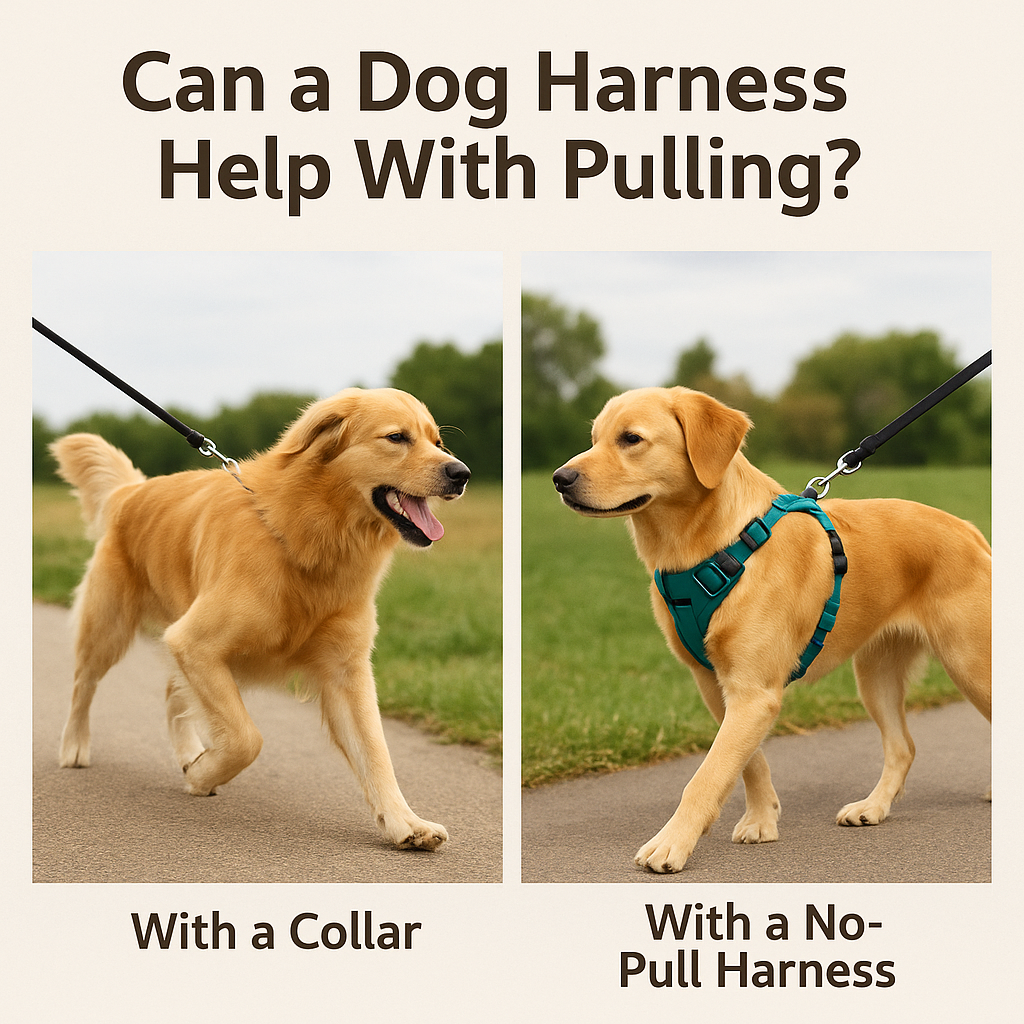Can a Dog Harness Help With Pulling? Vet-Approved 2025 Guide 🐕🔬

In this article
Can a Dog Harness Help With Pulling? Vet-Approved 2025 Guide 🐕🔬
By Dr. Duncan Houston BVSc
If you’ve been dragged down the street by an enthusiastic dog, you’ve likely wondered: “Do harnesses actually stop pulling?” As a veterinarian and the founder of Woopf, I can confidently say: yes, with the right harness and training, pulling can be reduced or stopped entirely.
Let’s dive into the science, behavior, and gear that help transform your daily walks from chaotic to calm.
🐾 Why Dogs Pull on the Leash
Pulling isn’t about dominance—it’s instinct. Dogs move faster than we do, and the world is full of distractions. Without training or redirection, they quickly learn that pulling gets them where they want to go.
Study Insight: According to PubMed and the Journal of Veterinary Behavior, leash-pulling behavior is self-reinforcing. The more success a dog has pulling, the more ingrained the habit becomes.
✅ Can a Harness Stop Pulling?
Not all harnesses are created equal. A no-pull front-clip harness can effectively reduce pulling by redirecting forward momentum.
How it Works:
-
Front-clip harnesses shift the dog’s chest to the side when they pull, discouraging the behavior.
- Back-clip harnesses offer control but don’t prevent pulling—they can even encourage it in determined dogs.
🧠 What the Research Says
Veterinary research published in Elsevier’s Applied Animal Behaviour Science confirms that properly fitted front-clip harnesses:
- Reduce leash pressure
- Minimize spinal torque
- Lower signs of distress and pulling in force-free trained dogs
👨⚕️ Vet-Approved Harness: The Woopf Explorer
Our Explorer Harness is designed to redirect pulling without causing discomfort or restricting shoulder movement. Key features include:
- Front & back D-ring clips
- Reflective no-choke chest panel
- Multi-point adjustability for all breeds
Try it with the Woopf Bungee Lead
For strong pullers, our shock-absorbing lead reduces tension on your arm and your dog’s neck—especially when paired with the front clip.
🏋️ Does Size or Breed Matter?
Yes. Pulling is more common in large working breeds (Huskies, Staffies, German Shepherds), but small dogs can develop the habit too.
- Small breeds: Use our Sherpa Harness for gentle redirection without neck pressure.
- Large breeds: Use the Explorer + Bungee Combo to distribute pressure safely.
🦮 Why Collars Don’t Help
Flat collars and choke chains can make pulling worse and cause injuries:
-
Neck trauma (tracheal damage, nerve compression)
-
Behavioral fallout from pain or stress
- Escapability – dogs often slip out of loose collars
PubMed Insight: Dogs in choke collars showed elevated cortisol and increased aggression over time compared to those trained with positive reinforcement and front-clip harnesses.
🧩 Combine With Training for Best Results
A harness is just one part of the solution. Combine it with:
- Clicker or verbal marker training
- “Stop and go” leash rules
- Rewarding calm walking at your side
🎁 Upgrade Your Walking Kit
Pair your harness with:
- Explorer Dual Pocket Poo Bag Dispenser (treats + bags)
Final Thoughts
Yes—harnesses really can help with pulling. But only the right harness. With proper fit, the right lead, and basic training, you can finally enjoy stress-free walks. Start with the gear made by vets, tested by dogs, and built for real-life adventures.



